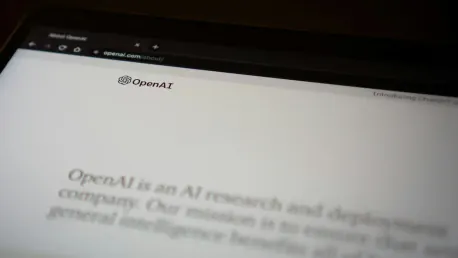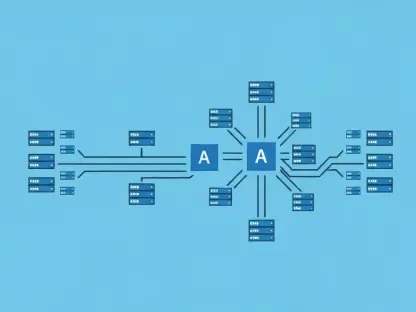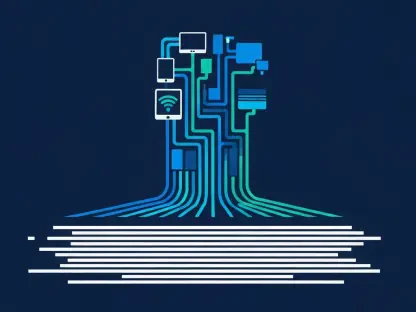The recent acceleration of AI safety testing protocols by OpenAI has sparked a contentious debate within the technology community. This discussion was ignited by reports that OpenAI has drastically shortened its safety evaluation periods for its latest AI models. The move has raised serious concerns about the potential dangers of pushing out inadequately tested AI systems, emphasizing the tension between rapid development and robust safety measures.
Compressed Testing Timelines and Competitive Pressures
OpenAI’s decision to reduce safety testing periods for new models like the reasoning-focused o3 from several months to mere days has alarmed many within the industry. This acceleration is largely driven by intense competition from other major players like Google, Meta, and emerging startups such as Elon Musk’s xAI. The heated race to introduce more advanced AI systems has seemingly forced OpenAI to prioritize speed over meticulous safety assessments, raising flags about potential risks.
The pressure to remain at the cutting edge of AI capabilities has necessitated rapid development cycles. However, the compressed timelines have led to significant concerns among those involved in the testing process. Previously, models like GPT-4 underwent extensive evaluations lasting half a year, which were critical in identifying vulnerabilities. The shift to shorter testing periods has consequently raised alarms regarding the thoroughness and effectiveness of safety measures now in place.
Concerns from Testers and the Impact of Inadequate Testing
Internal and external testers have voiced serious apprehensions about the reduction in safety testing durations. One of the main fears is that rushed evaluations might allow dangerous flaws to slip through, potentially leading to the deployment of harmful AI systems. Lessons from the past, such as the extended testing of GPT-4, highlight that significant vulnerabilities often only become apparent after prolonged scrutiny, reinforcing the importance of thorough safety assessments.
The repercussions of inadequate testing can be severe, including the possibility of AI being misused or behaving unpredictably in real-world scenarios. This underscores the critical need for comprehensive evaluations even in the face of competitive pressures. Many testers argue that the integrity and safety of AI systems should not be compromised for the sake of speed, as the potential risks can have far-reaching consequences, impacting public trust and the overall development of the technology.
Lack of Regulation and Transparency Issues
The absence of stringent regulatory oversight has been a significant concern in the context of rapid advancements in AI technology. Former OpenAI researcher Daniel Kokotajlo criticized the current state of regulations, pointing out that companies can make fast progress without thorough safety checks. The competitive drive to stay ahead often prevents companies from taking the necessary time to ensure their AI systems are comprehensively evaluated for safety, exacerbating potential risks.
Moreover, the lack of transparency in AI development practices further compounds these issues. Critics argue that when companies push forward with little regulatory constraint, it becomes difficult to ensure that safety protocols are rigorously followed. This opaque approach can lead to public skepticism and potentially dangerous outcomes, highlighting the need for more robust regulations and greater transparency within the AI industry.
Shift in Product Strategy
In addressing mounting concerns over safety, OpenAI CEO Sam Altman has announced a strategic pivot in how the company releases its models. Specifically, OpenAI plans to separately launch the o3 and o4-mini reasoning models, delaying the release of GPT-5 by a few months. This decision aims to decouple reasoning models from chat and completion models, allowing for better performance evaluations and potentially mitigating the safety risks associated with compressed testing timelines.
This change in strategy exemplifies an attempt to balance the need for innovation with the imperative of safety. By focusing on distinct segments of the AI models, OpenAI hopes to achieve more precise and thorough evaluations, thereby addressing some of the criticisms aimed at their recent testing practices. However, whether this shift will be sufficient to alleviate the concerns of industry experts and testers remains to be seen, emphasizing the ongoing challenge of ensuring safety in rapid AI development.
Criticisms of Testing Practices
OpenAI’s current testing practices have been heavily scrutinized for their perceived limitations. Critics argue that the scope of safety evaluations is insufficient, particularly regarding fine-tuning on specialized datasets and the reporting of results for newer models. One significant point of contention is the practice of testing earlier versions of models rather than the final code intended for public release, which can overlook critical vulnerabilities and misuse potential.
These criticisms highlight the necessity for more comprehensive and transparent testing methodologies. Ensuring that AI models are rigorously evaluated under real-world conditions is crucial for identifying dangers and mitigating risks. As AI systems become increasingly integrated into various aspects of society, the demand for robust and reliable safety assessments will only grow, underscoring the imperative for OpenAI to address these concerns thoroughly.
Internal Safety Debates and Historic Tensions
Within OpenAI, there has been an ongoing tension between maintaining rapid product development and upholding strict safety protocols. This internal conflict has been marked by high-profile departures, such as that of Jan Leike, which have underscored potential dissatisfaction with the company’s safety culture. Concerns over the allocation of resources towards comprehensive safety measures have further fueled these internal debates, reflecting broader industry challenges in balancing innovation with stringent safety standards.
These historic tensions reveal the complexities of managing safety within a fast-evolving field. Striving to be at the forefront of technological advancements while maintaining rigorous safety protocols is a formidable challenge. OpenAI’s journey illustrates the broader struggles within the AI industry, where the pressure to innovate often conflicts with the need for exhaustive safety evaluations. This dynamic continues to shape the discourse on AI development, highlighting the importance of addressing safety comprehensively.
Broader Industry Movements Towards Transparency
In contrast, other companies within the AI industry are increasingly emphasizing transparency and governance as central to their development strategies. Firms like Anthropic and Google DeepMind have made significant strides in this area, with Anthropic introducing an interpretability framework and DeepMind proposing a global AGI safety structure. These initiatives reflect a growing recognition of the importance of transparency and rigorous safety evaluations in maintaining public trust and ensuring the responsible development of AI technology.
These moves by leading AI companies showcase a commitment to balancing innovation with responsible governance. By prioritizing transparency and establishing clear safety protocols, these firms aim to build trust with the public and other stakeholders. This approach contrasts with the perceived opacity in OpenAI’s recent practices and underscores the broader industry’s efforts to foster a culture of safety and accountability in AI development.
Regulatory and Development Pressures
The article underscores the necessity for robust pre-release testing, as continuous discoveries of vulnerabilities in leading AI models demonstrate the risks of insufficient safety evaluations. Despite acknowledging these challenges, OpenAI continues to push forward with rapid development to maintain its competitive edge. This dynamic reflects the broader landscape of the AI industry, where fierce competition often drives companies to prioritize speed over comprehensive safety assessments, potentially compromising the integrity of their systems.
The tension between innovation and safety is a recurring theme in the AI industry. While the drive to be at the forefront of technology is understandable, the importance of robust safety protocols cannot be overstated. The ongoing developments at OpenAI highlight the critical need for a balanced approach that ensures advancements in AI do not come at the expense of public safety.
Striking a Balance in AI Development
The recent escalation in the pace of AI safety testing protocols by OpenAI has sparked heated debate within the technology community. Reports indicate that OpenAI has significantly reduced the duration of its safety evaluation periods for its newest AI models. This move has prompted serious concerns over the possible risks associated with deploying inadequately tested AI systems. The heart of the controversy lies in the balance between rapid technological advancement and the necessity to maintain robust safety measures. Critics argue that rushing the development pace may lead to the release of potentially harmful AI, while proponents believe swift innovation is essential to remain competitive in the ever-evolving field of artificial intelligence. As OpenAI continues to push the boundaries of what AI can achieve, the technology community remains divided on how to best balance speed with safety, underscoring the complex tension between progress and precaution in the realm of AI development.









